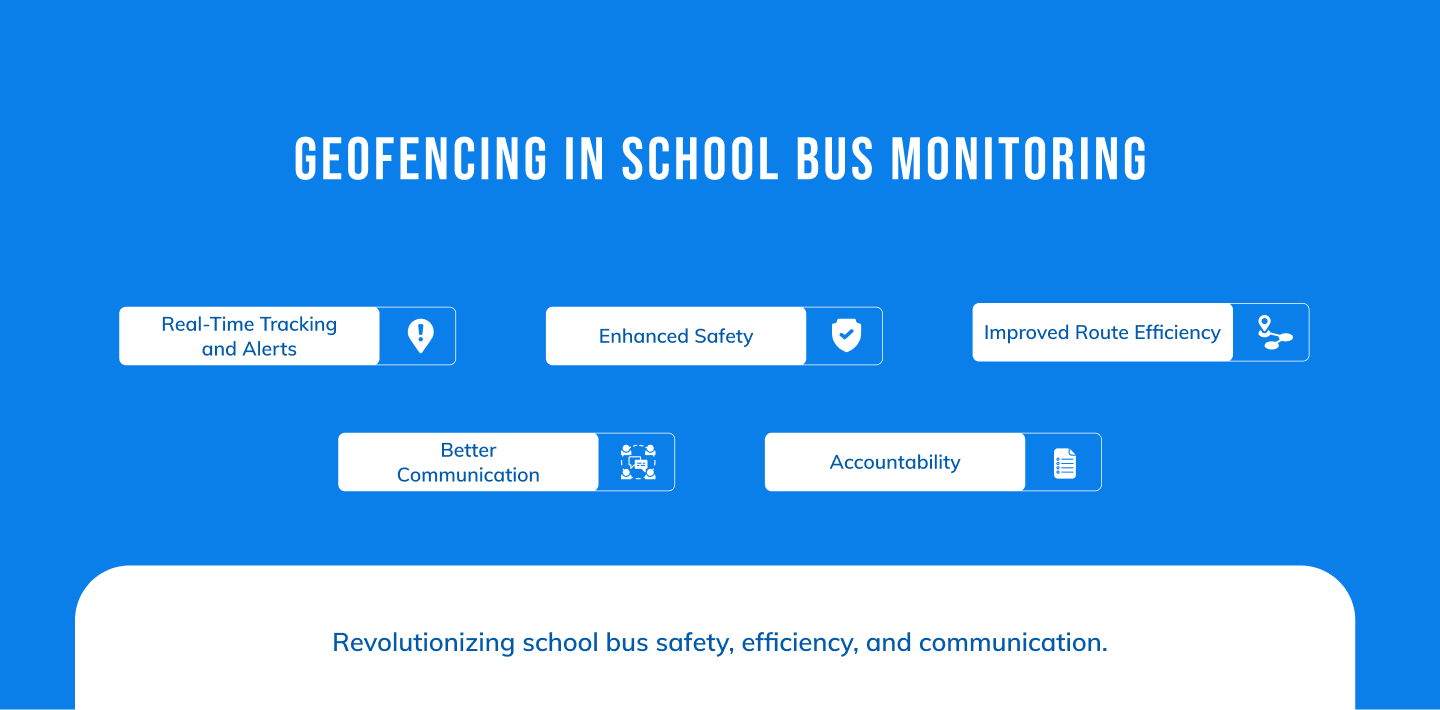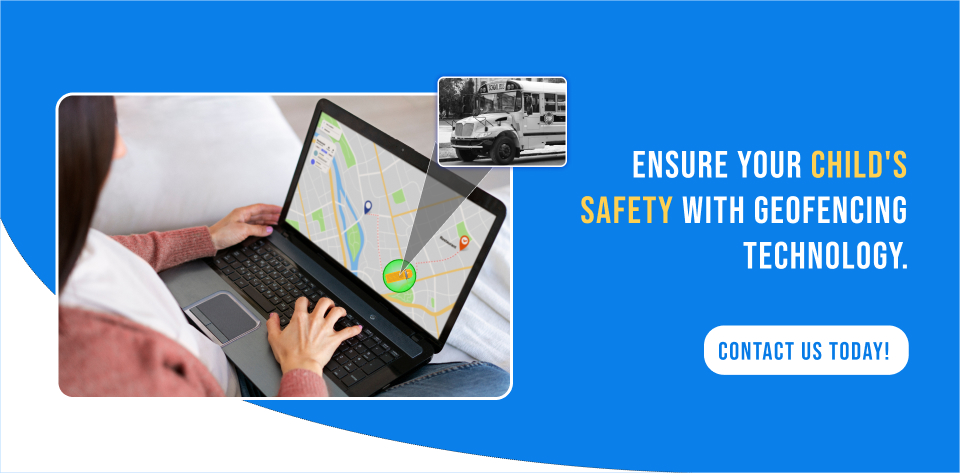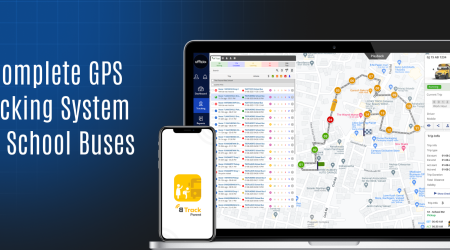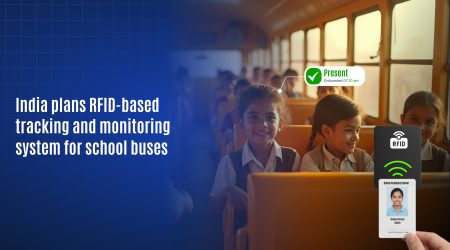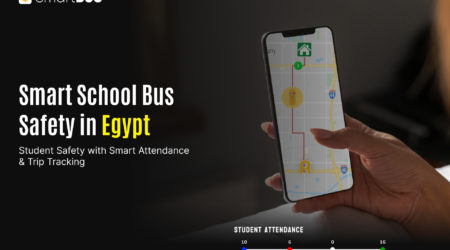Why Geofencing Matters for School Bus Safety
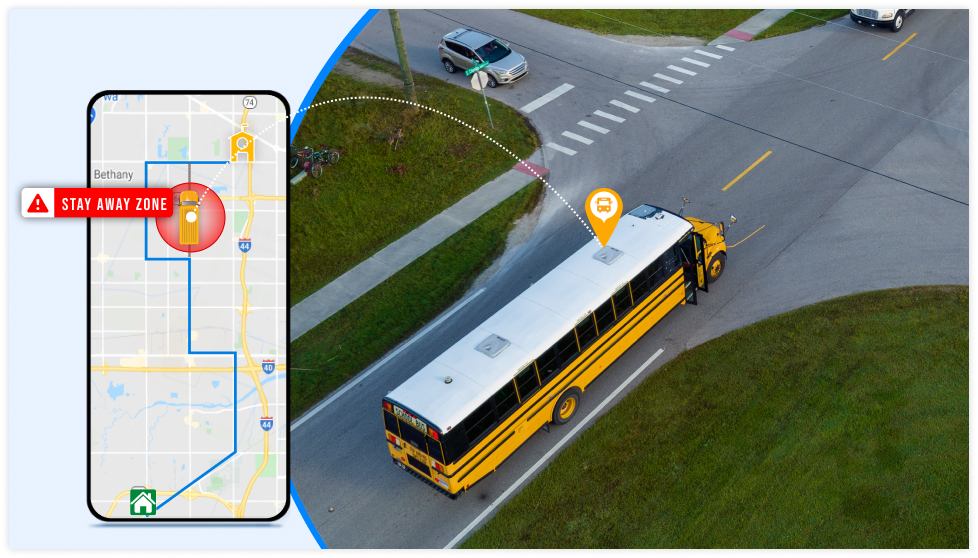
Every school day, millions of children rely on school buses. This routine journey often stresses many parents. They worry about safety, punctuality, and accountability. Traffic, unpredictable weather, and occasional miscommunication add to the stress. Ensuring the safety of children during their commute is essential, but how do we tackle these problems effectively? Geofencing provides a solution.
Problems with Traditional School Bus Commutes
Lack of Real-Time Tracking
Parents often find themselves in the dark, both literally and figuratively. They don’t know the exact location of the bus. If it’s delayed, they don’t receive an immediate update. This lack of real-time tracking causes worry.
Many parents resort to calling the school office for updates, which increases the workload for school staff and isn’t always reliable. Traffic conditions, weather, and unexpected incidents can cause delays. Without real-time tracking, these issues aren’t quickly communicated, resulting in a stressful and frustrating experience for parents.
Safety Concerns
Accidents, while rare, are a grave concern. Traditional bus systems often lack immediate communication tools to address emergencies swiftly, leading to serious consequences.
When an accident occurs, every second counts. Traditional systems rely on drivers to manually communicate emergencies, which can delay emergency services. Additionally, without precise location data, responders may struggle to find the exact spot of the incident quickly, potentially putting children’s lives at risk.
Unauthorized Stops
Sometimes, buses make unauthorized stops at places that aren’t designated as safe or appropriate, putting children at risk, especially if they wander away or meet strangers.
Unauthorized stops can occur for various reasons, such as drivers making unscheduled stops for personal reasons or accommodating last-minute changes. These stops can happen in areas not designated as safe for children, increasing the risk of them wandering into unsafe areas or encountering strangers. This is a significant safety concern that needs addressing.
Inefficiencies in Routes
Some routes are longer than necessary. Buses can get stuck in traffic, increasing travel time. This not only causes delays but also leads to higher fuel consumption and costs.
Traditional school bus systems often face inefficiencies in routes. Traffic jams, road construction, and other factors can lead to longer travel times, delaying students’ arrival and increasing fuel consumption. Higher fuel consumption means increased operational costs for the school district. Inefficient routes also contribute to environmental pollution, adding to the overall negative impact.
Communication Gaps
At times, parents and schools aren’t on the same page. Miscommunications can leave parents clueless about route changes or delays, causing frustration and trouble.
Effective communication between schools and parents is crucial for smooth transportation. However, traditional systems often rely on manual communication methods, leading to miscommunications or delays in conveying important information. Parents may not receive timely updates about route changes, delays, or other issues, leading to confusion and frustration.
Geofencing: A Technological Solution
What is Geofencing?
Geofencing creates virtual borders using RFID or GPS technologies. When a device crosses these boundaries, it triggers an alert, which can be applied to school buses to enhance monitoring and safety.
Using GPS or RFID, geofencing technology creates virtual boundaries around specified regions. When a device, such as a school bus, crosses these boundaries, it triggers predefined actions or alerts. These alerts can be sent to parents, school officials, or bus drivers, providing real-time information about the bus’s location. This technology integrates into existing transportation systems to improve safety and efficiency.
How Geofencing Works for School Buses?
Schools set geofences around the school, bus stops, and the entire route. When the bus crosses these virtual boundaries, it sends alerts to parents and school officials, providing invaluable real-time information.
For example, when a school bus leaves the school premises, a geofence alert notifies parents that the bus is on its way. As the bus approaches a designated bus stop, another alert notifies parents that it’s time to pick up their child. Similarly, if the bus deviates from its designated route, an alert notifies school officials to investigate. This continuous flow of real-time information keeps all stakeholders informed and enables immediate action if necessary.
Benefits of Geofencing in School Bus Monitoring
Real-Time Tracking and Alerts
Geofencing provides real-time updates on the bus’s location. Parents receive notifications when the bus is near the stop, reducing waiting time and concern.
Real-time tracking is one of the most significant benefits of geofencing technology. Parents no longer need to guess when the bus will arrive. With real-time updates, they can plan their time better and ensure they’re at the bus stop on time, reducing the worry and stress associated with waiting. For school officials, real-time tracking allows them to monitor the bus’s progress and address any issues promptly.
Enhanced Safety
Geofencing alerts schools of any deviation from the designated route, ensuring unauthorized stops are immediately noticed. In emergencies, schools can quickly locate the bus.
Safety is a primary concern for any school transportation system. Geofencing enhances safety by ensuring buses stick to their designated routes. If a bus deviates from the route, an alert is triggered, allowing school officials to take immediate action. This prevents unauthorized stops and ensures children aren’t put at risk. In emergencies, schools can quickly identify the bus’s precise location, allowing for a fast response.
Improved Route Efficiency
Geofencing helps schools analyze bus routes, identifying the most efficient routes to save time and fuel, leading to more punctual arrivals and departures.
By analyzing data from geofencing systems, schools can optimize bus routes, ensuring buses travel the most fuel-efficient routes, cutting down on both trip time and mileage. More efficient routes mean students spend less time on the bus and more time in school or at home. It also leads to cost savings for the school district, as fuel consumption is reduced. Additionally, shorter routes contribute to environmental sustainability by lowering the carbon footprint of school transportation.
Better Communication
Geofencing ensures parents stay informed through regular updates. Schools immediately communicate any changes in the route or schedule, reducing stress and confusion.
Effective communication is crucial for smooth transportation. Geofencing technology ensures parents stay informed about the bus’s location and any changes in the route or schedule, reducing miscommunication and ensuring everyone is on the same page. Regular updates keep parents informed and reduce the stress associated with waiting for the bus. It also improves the overall relationship between parents and the school, as there is greater transparency and trust.
Accountability
Geofencing holds drivers accountable. The system logs any deviation or delay for review, ensuring better adherence to schedules and routes.
Accountability is another significant benefit of geofencing technology. With real-time tracking and logging of all movements, schools hold drivers accountable for sticking to the designated routes and schedules. The system logs any changes or delays for review by school officials, ensuring drivers adhere to schedules and routes, leading to a more reliable transportation system. It also provides a basis for addressing any issues or concerns that may arise.
Challenges in Implementing Geofencing
Initial Costs
Setting up geofencing technology involves initial costs. Schools need to invest in GPS devices and software, but the long-term advantages outweigh these expenses.
The initial investment required to implement geofencing technology can be a barrier for some schools. This includes the cost of GPS devices, software, and installation. However, it’s important to consider the long-term benefits. Improved safety, efficiency, and communication can lead to cost savings and a better overall transportation system. Additionally, some costs can be offset by reduced fuel consumption and lower operational expenses.
Training
Schools need to train staff and drivers to use the new system, requiring time and resources. But once trained, the system becomes easy to use and highly effective.
Implementing new technology requires training for staff and drivers. This includes understanding how to use the GPS devices, software, and respond to alerts. While this requires time and resources, the benefits outweigh the initial investment. Once trained, staff and drivers can use the system effectively, leading to a safer and more efficient transportation system. Continuous training and support ensure the system remains effective over time.
Privacy Concerns
Tracking movements raises privacy concerns. Schools must ensure they use the data responsibly and have clear policies on data privacy and usage.
Privacy concerns arise when tracking movements, so schools must have clear policies on data privacy and usage. This includes ensuring they use data only for its intended purpose and don’t share it without consent. Schools must be transparent with parents and staff about how they collect, use, and protect data. Addressing privacy concerns builds trust and ensures responsible use of technology.
Technical Issues
Like any technology, geofencing can face technical difficulties. Regular upgrades and maintenance ensure smooth operation.
Technical issues can arise with any technology, and geofencing is no exception. GPS devices and software can experience problems or breakdowns. Regular maintenance and updates ensure the system functions smoothly. Schools should have a plan to address any technical issues promptly, including having technical support available and conducting regular checks to ensure the system works as intended.
Case Study: American Public School
American Public decided to implement geofencing for their school buses. They faced several issues with their traditional system, such as delays, unauthorized stops, and communication gaps. They sought a solution to ensure the safety of their students and peace of mind for parents.
Implementation Process
The school partnered with a geofencing technology provider, installed GPS devices on all buses, set virtual boundaries around the school, bus stops, and routes, and trained the staff and drivers on using the system.
The implementation process began with selecting a geofencing technology provider. The school reviewed several options and chose a provider that met their needs. They then installed GPS devices on all school buses, set virtual boundaries around the school, bus stops, and routes, and trained staff and drivers on how to use the system and respond to alerts. The entire process took a few weeks, but the results were worth the effort.
Results
were immediate and impressive. Parents received real-time updates on bus locations. Delays minimized as schools optimized routes, unauthorized stops were eliminated, and communication between the school and parents improved significantly.
After implementing the geofencing system, American Public saw immediate results. Parents appreciated receiving real-time updates on bus locations, reducing the worry and stress associated with waiting. Optimized routes minimized delays, ensuring students arrived on time. The school eliminated unauthorized stops, enhancing student safety. Improved communication between the school and parents led to greater trust and satisfaction.
Feedback from Parents and Staff
Parents appreciated the real-time updates and felt more secure knowing the exact location of the bus. Staff found the system easy to use after the initial training period, resulting in high satisfaction levels.
Parents and staff provided strongly positive feedback. Parents appreciated the real-time updates and felt more secure knowing the exact location of the bus, reducing their anxiety. Staff found the system easy to use after the initial training period, which provided them with the knowledge and skills to use the system effectively. Overall, the satisfaction levels were high, and the school received positive feedback from the community.
Future of Geofencing in School Bus Monitoring
Integration with Other Technologies
Geofencing can integrate with other technologies like cameras and sensors, providing a comprehensive safety solution. For example, cameras can monitor behavior inside the bus, while sensors can detect and alert about any mechanical issues.
The future of geofencing in school bus monitoring looks promising with the integration of other technologies. Cameras can be installed on buses to monitor behavior and ensure student safety. Sensors can detect mechanical issues and alert the driver and school officials. This comprehensive safety solution provides a higher level of security and efficiency. Integrating these technologies creates a robust system that addresses various safety concerns and improves the overall transportation experience.
Expansion to Other School Activities
Schools can apply geofencing to more than just bus monitoring. Schools can also use it for field trips and journeys to ensure the safety of students during all off-campus activities.
Geofencing technology isn’t limited to school bus monitoring. Schools can expand its use to other activities, such as field trips and journeys. By setting virtual boundaries around the travel area, schools can monitor students’ location and ensure their safety. This provides peace of mind to parents and teachers, knowing students are safe during off-campus activities. The flexibility of geofencing technology allows its use in various scenarios, enhancing overall student safety.
Continuous Improvement
As technology evolves, geofencing will become even more efficient. Continuous updates and improvements will ensure better performance and reliability.
The technology behind geofencing is continuously evolving. As new advancements are made, geofencing systems will become even more efficient and reliable. Continuous updates and improvements ensure the technology remains effective and up-to-date. Schools can benefit from these advancements by staying informed about the latest developments and implementing new features. This continuous improvement ensures geofencing remains a valuable tool for enhancing school bus safety.
Conclusion
Geofencing plays a crucial role in school bus safety by providing a modern, technological solution to traditional problems, ensuring the safety and well-being of students. Schools that adopt geofencing technology can create a safer and more efficient transportation system, benefiting the entire school community. Geofencing is a valuable investment in the future of school transportation, providing peace of mind to parents and ensuring the safety of our children.
